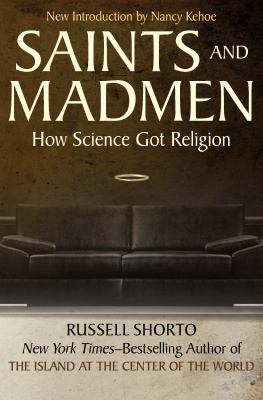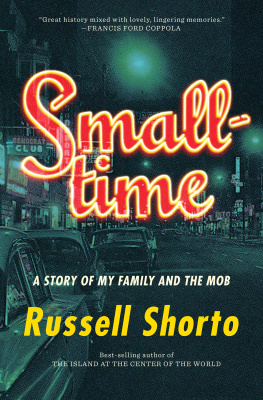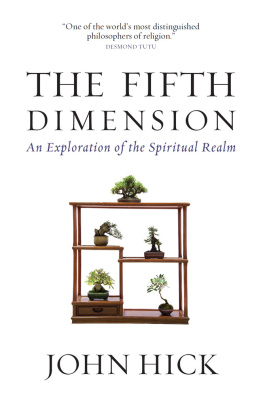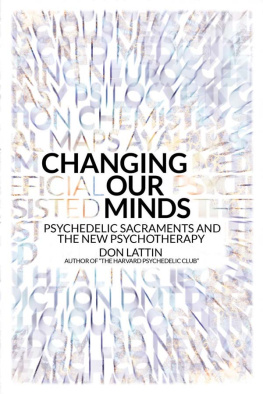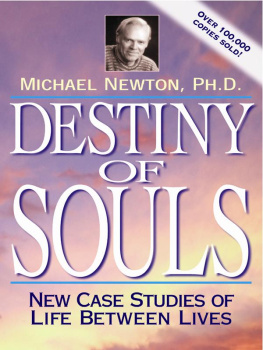
Saints and Madmen
How Science Got Religion
Russell Shorto

Foreword
The resistance to addressing an individuals religious and spiritual beliefs and practices in the field of psychiatry, psychology and social work has a long history, dating back to Freuds view of religion. For him, religion was either a defense or a symptom. Learning how to take a religious history, how to explore religious material in therapeutic work with an open, non-judgmental attitude was omitted in the training of mental health professionals.
Shortos book, published in 1999, was a knock on that closed door. He searched out and interviewed men and women who departed from the main stream view and in doing so, presented his readers with the challenge of rethinking the long held position of omission or of pathologizing a persons beliefs. But religion is not always good for people and he presents the complexity of what a persons beliefs can mean and can lead to in destructive ways as well as constructive ways.
Since his book was first published, progress has been made in the ways mental health professionals deal with the complex interaction of a persons beliefs and their mental health and mental illness. Including an understanding of the role religion plays in a persons life in the training of psychiatric residents, psychologists and social workers, while not a part of the core curriculum in all academic programs, has increased significantly. At academic conferences, spirituality and religion is more frequently included in presentations, workshops and research.
In a world where religious discourse can be so polarizing, the ability to have respectful conversations that are motivated by a desire to genuinely understand the other is crucial. Shorto, in his approach both to the patients and the therapists he interviewed, illustrates the benefit of doing just that. As he says in the chapter on Crusaders, Terrorism doesnt spring from open-air discussions, but from closed rooms; conspire literally means to breathe together, and in a close brotherhood of like minds individually held passions can get reechoed and simplified until they take on a reality of their own.
Shorto, in his clear and engaging way of presenting the cases and his study of the history of psychiatry and religion, makes the case that talking about religion and spirituality in the clinical context is not tantamount to believing and accepting all that an individual presents but that therapists need to inquire, explore, be curious and non-judgmental. All this is in the service of truly understanding the other as he so aptly has done.
Nancy Kehoe RSCJ, PhD
Author of Wrestling with Our Inner Angels: Faith, Mental Illness and the Journey to Wholeness
1
The New Psychotics
Consider that you are in God, surrounded and encompassed by God, swimming in God.
MOTHER TERESA
Space is the place.
SUN RA
THE CRACKING OPEN OF Joshua Beils world began on a thick August day in 1996, in New Yorks Central Park. Actually, depending on how you figure these things, it could have started at the beginning of that summer. No one knows why a large percentage of what psychiatrists call psychotic episodes occur at the coming-of-age stage of lifelate teens to early twentiesbut one guess is that the unhinging of ones sense of reality is in these cases related to that first significant severing of connection to home and parents. Going out on your own, planting your identity in new soil, giving it new air to breathe, a chance to grow in new directions, not necessarily the straight-up path your parents encouraged but maybe sidewinding, maybe forgoing the air altogether and burrowing down, exploring the soil itselfsuch wild freedom may be just too much for some psyches.
In Joshuas case there was an extra dose of disorientation. He had been born and raised in Honolulu, where body-boarding, pottery, and Bob Marley were his major interests. The only other part of the world he knew was the even more laid-back surf town of Santa Cruz, California, where he had spent his first two years of college at U.C. Santa Cruz. But his father thought he could do with a bit of real-world experience, so he arranged a summer internship at Citibank in New York City. Out of filial duty, Joshua went along with the plan, but the new environment was almost overwhelming; he had never been to the East Coast, and the throbbing, broiling, stiff-necked skyscraper cauldron of Midtown Manhattan was like another planet. He had no friends in the city, no points of contact with anything he knew, and the pin-striped account jockeys that surrounded him might as well have been zoo creatures.
On that day in August, his wandering around the city landed him in Central Park. He was wearing sandals and had cut his foot; he asked someone nearby if he happened to have a bandage. In answer, the fellow handed him a rolling paper. Joshua grinned and said thanks, whereupon the stranger gave him a shaka, a waggle of the thumb and little finger, the Hawaiian be cool sign. They began talking; the guy had been to Hawaii. Joshua fell in with the young man, whom we will call Alan, and who turned out to be temporarily homeless and temporarily unemployed. He had an interesting potential business, though, selling quartz crystals, which he said he had mined himself. He took Joshua to a truck; indeed, the back was filled with crystals. He just needed a little money to get things off the ground. Joshua loaned him two hundred dollars. He was beginning to feel a little light-headed. Lets go clubbing tonight, Alan said.
They ended up at Wetlands, a downtown club that showcased world music. Late in the evening, after a few drinks and a modest amount of marijuana, Joshua found himself in a separate room in which a drumming circle was taking place. He picked up a drum and joined in. And then it happened. He doesnt know how much time passed, but he began to feel part of the rhythm, that he was the rhythm, that he was carrying the whole drumming circle. Very quietly, as if tiptoeing across an unnoticed line, his personality unhinged.
Standing outside the door of his apartment building at four oclock that morning, he noticed a shadow on the back of his hand. As he watched, it took the form of a falcon. Then the falcon flapped its wings and transformed into a bear, then a bull. He was mildly astonished, and went inside to get a better look at himself. In his apartment, he saw a rainbow of electrical beams shooting through his palm. He held his arms out to the sides and watched light pass through his body. He examined his mood, and realized that he felt exhilarated and wonderfully peaceful at the same time. He had enough attachment to reality to understand that something unusual was going on, but he felt sureand continues to this day to be surethat he wasnt delusional. These were not hallucinations, he said, because I definitely saw them. Instead, he had the strong impression that this was the beginning of some sort of enlightenment process.
Hold it right there. The glossary of the American Psychiatric Association defines psychotic as grossly impaired in reality testing, meaning that a person loses the ability to tell the difference between the real world and the fairies of the mind. Psychosis involves delusions or hallucinations; one common manifestation of psychosis is hyperreligious ideation: believing you are God, seeing angels, believing you have a special mission to save humanity. Throughout the past century, and right up to the present, psychiatrists and psychotherapists have done a lot of hand-holding with people in psychotic states, listening to reports of their ecstatic visions, their accounts of meetings with Jesus and Lao-tzu, nodding a great deal, and then beginning the slow job of grounding the person, encouraging a reconnection with ordinary reality by talking about the weather or common objects. There is even a (rather grotesque-sounding) term for it in behavioral psychology:
Next page
